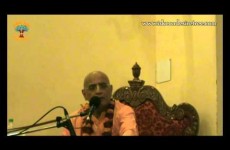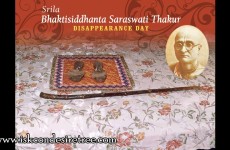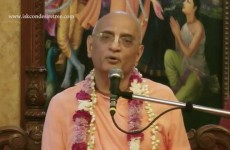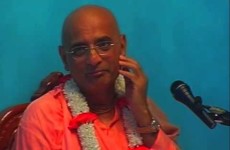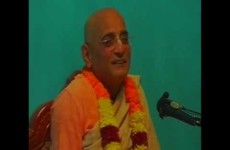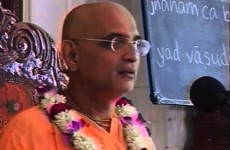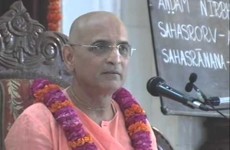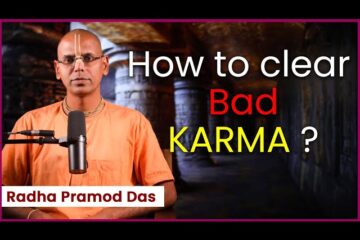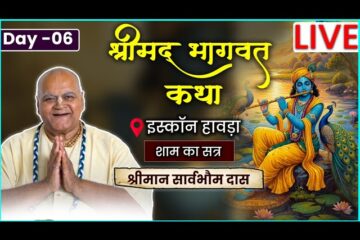Srimad Bhagavatam Canto-02, Chapter-09, Text-06
sa cintayan dvy-aksaram ekadambhasy
upasrnod dvir-gaditam vaco vibhuh
sparsesu yat sodasam ekavimsam
niskiñcananam nrpa yad dhanam viduh
Translation by His Divine Grace A. C. Bhaktivedanta Swami Srila Prabhupada:
While thus engaged in thinking, in the water, Brahmaji heard twice from nearby two syllables joined together. One of the syllables was taken from the sixteenth and the other from the twenty-first of the sparsa alphabets, and both joined to become the wealth of the renounced order of life.
Purport by His Divine Grace A. C. Bhaktivedanta Swami Srila Prabhupada:
In Sanskrit language, the consonant alphabets are divided into two divisions, namely the sparsa-varnas and the talavya-varnas. From ka to ma the letters are known as the sparsa-varnas, and the sixteenth of the group is called ta, whereas the twenty-first letter is called pa. So when they are joined together, the word tapa, or penance, is constructed. This penance is the beauty and wealth of the brahmanas and the renounced order of life. According to Bhagavata philosophy, every human being is meant simply for this tapa and for no other business, because by penance only can one realize his self; and self-realization, not sense gratification, is the business of human life. This tapa, or penance, was begun from the very beginning of the creation, and it was first adopted by the supreme spiritual master, Lord Brahma. By tapasya only can one get the profit of human life, and not by a polished civilization of animal life. The animal does not know anything except sense gratification in the jurisdiction of eat, drink, be merry and enjoy. But the human being is made to undergo tapasya for going back to Godhead, back home.
When Lord Brahma was perplexed about how to construct the material manifestations in the universe and went down within the water to find out the means and the source of his lotus seat, he heard the word tapa vibrated twice. Taking the path of tapa is the second birth of the desiring disciple. The word upasrnot is very significant. It is similar to upanayana, or bringing the disciple nearer to the spiritual master for the path of tapa. So Brahmaji was thus initiated by Lord Krsna, and this fact is corroborated by Brahmaji himself in his book the Brahma-samhita. In the Brahma-samhita Lord Brahma has sung in every verse govindam adi-purusam tam aham bhajami. Thus Brahma was initiated by the Krsna mantra, by Lord Krsna Himself, and thus he became a Vaisnava, or a devotee of the Lord, before he was able to construct the huge universe. It is stated in the Brahma-samhita that Lord Brahma was initiated into the eighteen-letter Krsna mantra, which is generally accepted by all the devotees of Lord Krsna. We follow the same principle because we belong to the Brahma sampradaya, directly in the disciplic chain from Brahma to Narada, from Narada to Vyasa, from Vyasa to Madhva Muni, from Madhva Muni to Madhavendra Puri, from Madhavendra Puri to Isvara Puri, from Isvara Puri to Lord Caitanya and gradually to His Divine Grace Bhaktisiddhanta Sarasvati, our divine master.
One who is thus initiated in the disciplic succession is able to achieve the same result or power of creation. Chanting of this holy mantra is the only shelter of the desireless pure devotee of the Lord. Simply by such tapasya, or penance, the devotee of the Lord achieves all perfections like Lord Brahma.
[To know more on this verse, visit – http://www.srimadbhagavatamclass.com/srimad-bhagavatam-canto-02-chapter-09-text-06/]












